Caring for indoor and garden ivy, propagation, disease control
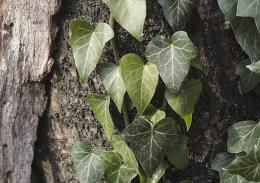
One of the most common indoor plants is Ivy or Hedera. Caring for Indoor Ivy does not require much effort, for which gardeners highly value it.
In addition, it is distinguished by its growth rate and the beauty of its foliage.
Content:
- Description of indoor ivy, how it looks in the photo
- Caring for Indoor Ivy, ordinary
- Ivy propagation
- Indoor ivy diseases and pests
- Types of indoor ivy
- Signs: can it be kept in an apartment?
- Garden ivy: care features
Description of indoor ivy, how it looks in the photo
Belongs to the Araliaceae family. In total, there are more than ten species and more than two hundred varieties in nature. The name of indoor plant usually means Common Ivy.

Hedera comes from the subtropics, in natural conditions it prefers shaded places, and is found in forests.
You can recognize it in the photo by the following features:
- Like many evergreen vines, it grows only with support, clinging to it with aerial roots. It grows up to 15-21 m long. In the subtropics it grows outdoors, entwining the walls of houses;
- The leaves are entire, divided into lobes along the edges. Light veins are clearly visible on the green leaf blades. Leathery and dense to the touch with a glossy surface. May vary in size and shape depending on the variety and species;
- The flowers do not look representative; they are small and collected in greenish inflorescences, they form blackish fruits.Although flowering is a rare occurrence at home, gardeners recommend cutting off the resulting inflorescences because they do not have the best smell. In addition, the fruits of this plant are poisonous.
Over the years, the stems of the flower become more dense, the bark becomes woody. Another distinctive feature is the fact that on the side of the stem that faces the support, roots are formed that promote the growth of vines.
Caring for Indoor Ivy, ordinary
An unpretentious and persistent plant will be a real boon for any gardener.
However, despite this, it is recommended not to forget the importance of proper care:
- After purchase, the flower should be replanted, since the flower is sold in a special substrate that does not absorb moisture well. The pot should be shallow; a drainage layer must be placed at the bottom of the container;
- When replanting, you should act with extreme caution so as not to damage the roots. Since the root does not tolerate drying out well, it is important not to delay replanting;
- After replanting, it is recommended to place the plant for a week separately from other flowers in the home garden. This is necessary for adaptation and will prevent the spread of diseases if the purchased flower is infected;
- Regular spraying and a warm shower will not be amiss. Excessively dry air provokes the formation of brown spots on the leaves;
- The optimal temperature is 15-17?C. In the cold season, it should be reduced to 6-12? C, although this persistent plant can easily tolerate both high and low temperatures;
- Hedera is demanding on lighting; with a lack of sunlight, the leaves can fade and stretch.However, direct sunlight can burn the records;
- Once every three months it is recommended to apply fertilizer, which can be purchased at any specialty store. In winter, it is recommended to reduce the frequency of fertilizer application to one;
- It is demanding when it comes to watering; the soil should always be moist, but the water should not stagnate, as this can lead to root rot. In winter, it is recommended to reduce the frequency and amount of watering.

Young vines need annual replanting, while adults should be replanted as the root grows. The optimal container for Hedera is considered to be a shallow but wide pot, at the bottom of which it is recommended to place a layer of drainage.
Ivy propagation
Like many other evergreen vines, only vegetative propagation methods can be used at home.
Available types include those indicated in the table.
| Cuttings | To make them, it is recommended to cut off the upper parts of the stems no more than 10 cm long, on which aerial roots have developed. Cut cuttings are placed in a mixture of leaf soil and sand and covered with polyethylene on top to ensure greenhouse conditions. It is important not to forget about the need to systematically moisten the soil. After rooting, the cuttings are planted in separate containers |
| By shoots | First you need to cut off a shoot that has already bloomed at least seven leaves. An incision is made along its entire length and the same side of the shoot is laid on wet sand and pressed into it. After the shoot takes root, it needs to be divided into parts so that there is one leaf per part and planted in different pots |
| By layering | It is similar to propagation by shoots, but the layering is not pressed into the substrate, but pinned to it with staples. In this case, the vines are not separated from the main stem |
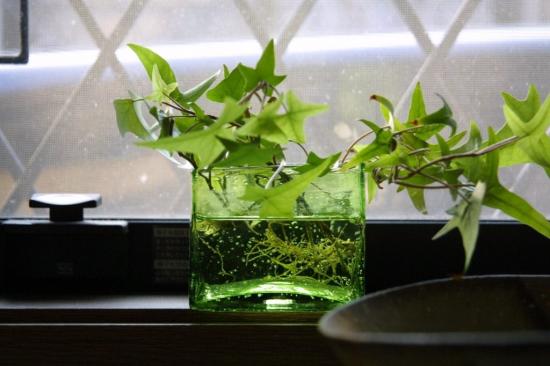
The effectiveness of each method is approximately equal. Anyone, even a novice gardener, can propagate Ivy by vegetative means.
More complete information about ivy propagation - n Wildeo:
[video^https://youtu.be/ojLebayD47A]
Indoor ivy diseases and pests
Ivy is a persistent plant and pests attack it quite rarely. But it also suffers from a number of diseases that arise as a result of improper care: excessively dry air, lack of moisture or light.
Despite the tough leaves and general resistance, Hedera sometimes suffers from attacks by spider mites, thrips, scale insects and mealybugs. They often appear as a result of a lack of moisture or too high a temperature in the room.
If you notice traces of parasites, it is recommended to treat the leaves with a solution of laundry soap or the insecticide Actellik. In especially severe cases, Ivy needs to be transplanted into new soil.
If care rules are not followed, brownish spots may appear on the leaves. If you do not pay attention to this in time, the spots will begin to spread, which can completely destroy the flower.
Types of indoor ivy
There are a large number of species and varieties. However, only a few of them are suitable for use in indoor gardening.
| Glacier | Like all home ivy, it is distinguished by small leaves with a white border and light spots on the blades. |
| Colchis | In the wild, they are distributed in the humid subtropical forests of Iran and Transcaucasia.The stems are thin, with aerial roots, the leaves are whole, leathery and glossy, and when touched they emit a nutmeg smell. Unlike other species, it feels best in the shade |
| Ordinary | Small leaves, thin stems. Often, it is the varieties of this species that are used in indoor gardening. |
Liana is used in both indoor and outdoor gardening. Depending on where Hedera will be planted, it is important to select the appropriate species, since street ones are large in size, inconvenient for apartment conditions.
Signs: can it be kept in an apartment?
It is difficult to find a plant with which folk wisdom does not associate any signs; Ivy is no exception. Conventionally, signs associated with Hedera can be divided into positive and negative.
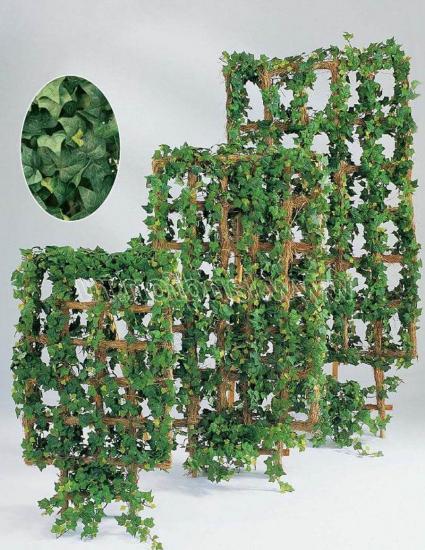
The positive ones include:
- Bioenergetics specialists recommend placing it on the windowsills of houses in order to harmonize the situation in the family and minimize conflicts;
- Suitable for families with hyperactive children, it will help normalize the energy in the room;
- There is an opinion that if you place the plant in the office, financial affairs will go uphill. This is due to the fact that the evergreen vine is the personification of the vitality of the spirit. That is why it is recommended to place it in the homes of constrained people who are unsure of their abilities;
- There is an opinion that flowering in the house is a sign that the house has the highest degree of harmony, marital fidelity, an atmosphere of mutual trust and understanding;
- Hedera is a universal protector against the evil eye and negative emotions directed at the inhabitants of the house. According to psychics, the flower can absorb negativity that flows into the house from the outside.If a person with evil intentions comes to the house, the flower will protect the family and prevent the possible development of negative consequences of negative energy.
However, along with positive signs, there are also a number of negative ones.
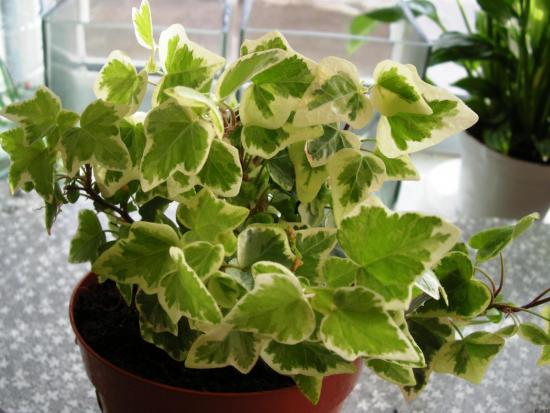
So, along with the positive properties of the plant, some argue that Hedera also has a number of negative properties:
- The first and most unpleasant property is considered energy vampirism. So, some believe that the plant not only protects the house from negative external influences, but also absorbs all the positive energy. To protect themselves from the danger of energy outflow, some gardeners place the flower on the balcony;
- Placing a flower in the house of an unmarried girl can negatively affect the girl’s personal life. This is due to the opinion of bioenergeticists that all climbing plants repel men from their owner;
- While some argue that a blooming Hedera is a sign that all is well in the house, some believe that, on the contrary, it is a harbinger of an imminent collapse in family life;
- People suffering from attacks of melancholy become even more vulnerable by planting a flower in the house;
- A broken branch of a healthy flower is a harbinger of money problems.
Believe it or not is a personal matter for everyone. First of all, it is important to consider that this is a beautiful plant that can decorate any room.
Let's watch a video about signs associated with comatose plants:
Garden ivy: care features
When caring for them, it is first of all important to consider that, regardless of the type and variety, they all love a fertile substrate.
Thus, it is important to consider that clay soils in Heder are not suitable as the roots will be starved of oxygen, which cannot penetrate the dense structure.
It is recommended to plant in the spring so that the plant has time to gain strength before the winter cold. When choosing, it is recommended to give preference to areas protected from drafts; it is better if they are located on a hill.
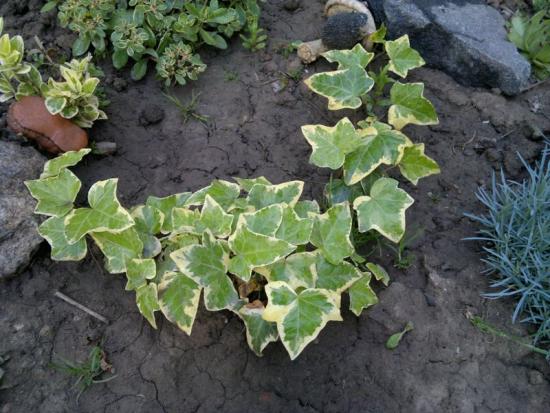
Other growing features include:
- For planting, it is recommended to select healthy seedlings with strong roots, a large number of strong branches and shiny, healthy leaves. The seedling should not show signs of damage or disease;
- Before planting, it is necessary to prepare the substrate in advance - universal or a mixture of leaf and turf soil, peat and sand in equal proportions will do;
- The hole for planting should be slightly larger than the root of the seedling; a drainage layer of small pebbles or expanded clay must be placed at its bottom;
- It is recommended to sprinkle the root placed in the hole with soil and water it on top.
After planting, the young seedling needs plenty of water and fresh air. It is recommended to systematically loosen the soil, especially after it rains. This will help prevent a crust from forming. It will not be superfluous to mulch the substrate.
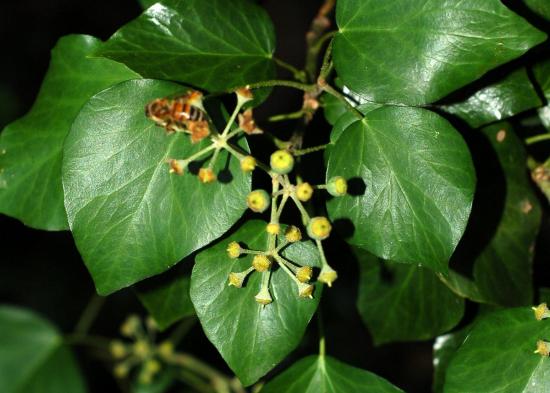
In addition, when leaving you need to:
- Water the vine twice a week. However, it is important to consider that Hedera does not tolerate excess moisture;
- In the first half of summer, it is necessary to apply nitrogen fertilizing; it promotes the formation and development of new branches. In the second - phosphorus and potassium, which helps to strengthen them;
- It is important not to forget about the need for systematic pruning of vines to form a bush and remove its dried and damaged branches. However, it is worth starting pruning at the beginning of summer, when the flow of juices has ended and the formation of the bush will bring benefit, not harm;
- Overwintering of Hedera in the south is possible without shelter; in warm climates, the vines calmly tolerate the winter drop in temperature under snow cover. In the northern regions, it is recommended to remove the shoots from the supports and lay them on the ground, insulating them with film and burlap.
When breeding Hedera, it is important to take into account that this plant grows very quickly and in a few years can completely fill the entire summer cottage.
To prevent this, it is recommended to systematically completely dig up excess shoots and remove shoots. This will prevent them from re-rooting. As a last resort, if it is not possible to remove the vines mechanically, you need to resort to the help of herbicides.
Indoor ivy is an unpretentious plant that does not require special care. It will become a decoration for any window sill and garden, requiring almost no effort in maintenance.


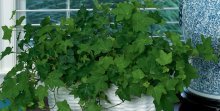

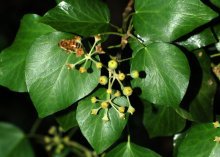
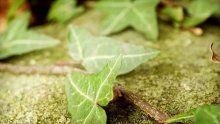
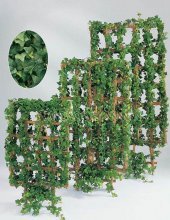
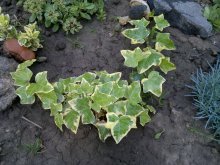
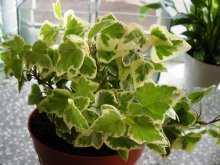
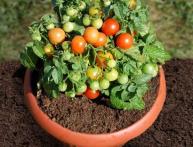
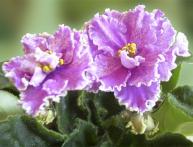

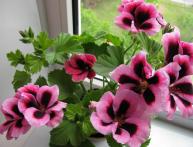
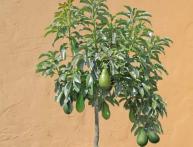


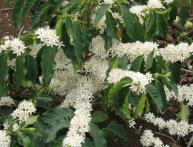
Comments
If I’m not mistaken, behind the yard near the fence there is an ivy growing that has never been planted by anyone, and no one looks after or cares for it, but the plant continues to grow beautifully and entwines the fence.